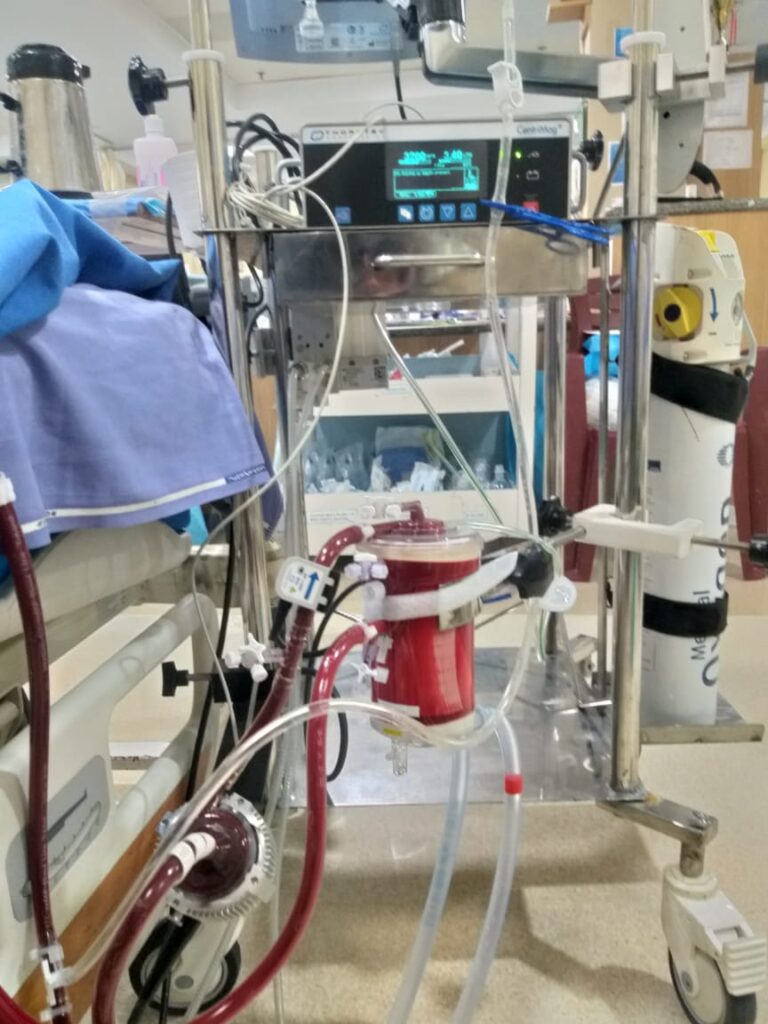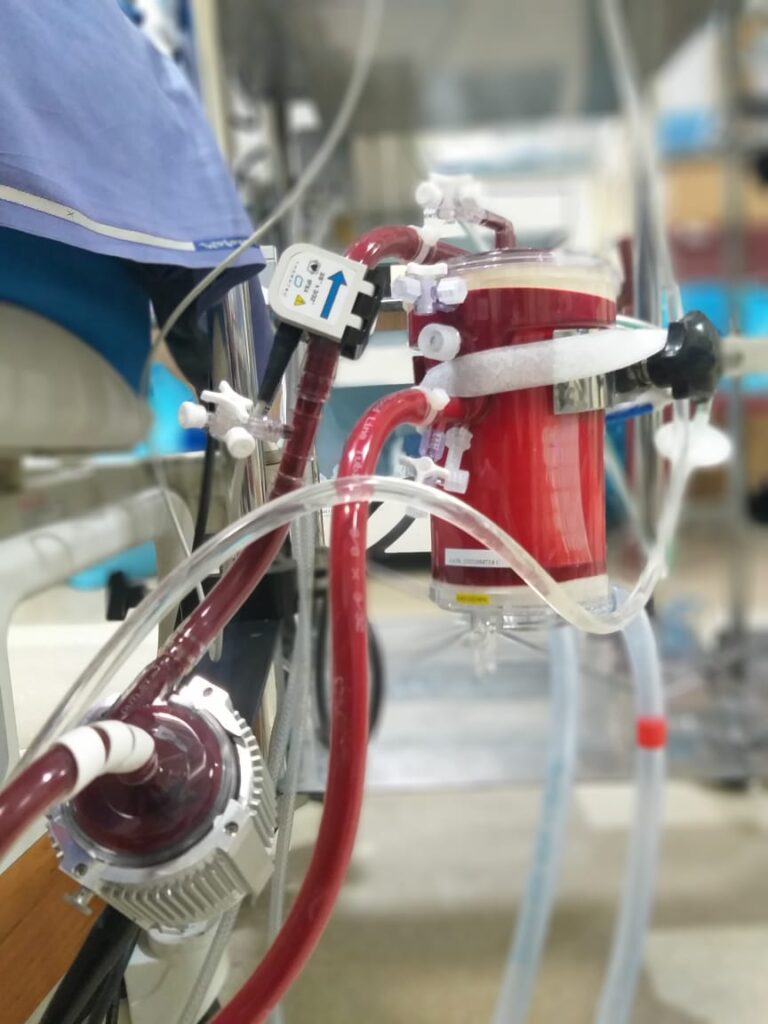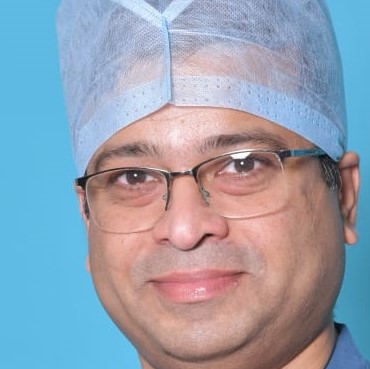India continues to combat the devastating second wave of the pandemic that continues to claim lakhs of lives everyday across the country. We know that the most common cause of death is lack of adequate oxygen in blood, as the virus severely damages the lungs. Although various modes of supplemental oxygen are used, such as oxygen mask, high flow nasal oxygen, BiPAP and invasive mechanical ventilation, all of these are effective when the lungs are capable of transferring oxygen to blood. With increasing lung involvement, there is a state of severe ARDS (Acute Respiratory Distress syndrome), where the lungs become stiff and blood oxygen levels drop below safe permissible limits, despite full ventilatory support. If untreated, lack of oxygen (hypoxia) can affect the functions of other organs, eventually leading to irreversible multiorgan dysfunction and death. In this situation, doctors resort to ECMO (Extra Corporeal Membrane Oxygenation).
What is ECMO?

The ECMO system acts like an artificial lung. A patient’s blood is passed through an artificial membrane lung, where there is exchange of oxygen and carbon dioxide and the oxygenated blood returns to the patient. The patient is connected to the ECMO unit by large bore tubing, inserted into the large veins of the body. Blood flows through the circuit at 4-5 L/min, speed maintained by a centrifugal pump. Heparin anticoagulation is essential to prevent blood from clotting inside the circuit.
With initiation of ECMO, the patient’s ventilatory support is reduced, to give the lungs rest. This helps in recovery of the diseased lungs. ECMO support is provided till lung function improves, serial x-rays show clearing of pneumonia, and blood gas parameters are satisfactory. Thereafter the ECMO support is gradually weaned off and removed. Patients usually need ventilatory support for a few more days until complete lung recovery.
ECMO in COVID19:

COVID19 patients require prolonged ECMO support, approximately 2-4 weeks, sometimes even longer. They need meticulous critical and nursing care to maintain hemodynamics, other organ functions, nutritional support and careful prevention of secondary infections. Various parameters are continuously monitored by specialized ECMO team comprising ECMO specialist doctors, nurses, perfusionists and physician assistants. There is need for blood product transfusions to maintain hemoglobin level and balance between anticoagulation and thrombosis. Physiotherapy and mobilization is important in rehabilitation of patients once they are stable on ECMO and after ECMO removal.
ECMO in COVID19 is induced as a rescue therapy to prevent impending death due to hypoxia (low oxygen). The procedure helps to supply oxygen to maintain vital organ function and sustain the patient till his own lungs recover. Approximately 40-60% patients recover to go home, depending on age, co-morbidities and other organ involvement. Survivors get a second lease of life, who would have otherwise succumbed had ECMO not been instituted in time. In some patients, lungs develop significant fibrosis, and do not recover despite prolonged lung rest in ECMO. Such patients can opt for lung transplantation.
ECMO is a scarce resource that requires meticulous selection of patients who can be offered this therapy. With the ever-rising death toll in the pandemic situation, the demand for ECMO support has increased exponentially. Medica Superspecialty Hospital, Kolkata, provides the largest ECMO center in Asia with 30 ECMO systems running simultaneously, more than 100 COVID19 patients being treated on ECMO support, yet it is still insufficient. Many patients from remote locations, who are too sick to be transferred on ventilation, have been retrieved with ECMO support and shifted safely to our unit by both road or air ambulance. Not all hospitals can have such large setups. Thus there is need to develop a referral system for sick patients to specialized ECMO centers for treatment.
The pandemic has forced us to rethink, innovate and increase our capacity to deliver quality healthcare to all patients. In these trying times, it is the smiling face of survivors that brings us happiness and provides the greatest inspiration to continue to fight all odds, strive to excel and achieve perfection.



